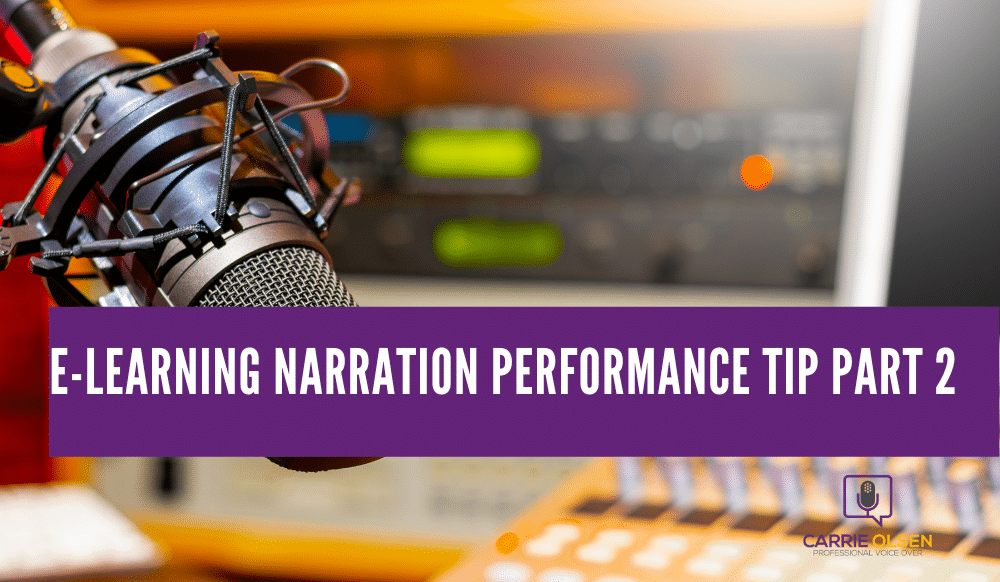
One E-learning Narration Performance Tip Part 2
This is a continuation of a post talking about the importance of reading ahead when performing e-learning narration. If you missed it, watch or read that first tip here.
Along the same lines as reading ahead, what you're looking for when you're reading ahead, it's not just content. You're looking for any cues, any clues that will help you to know what adjustments you need to make coming up.
Because there are so many, many fun opportunities in e-learning narration depending on, obviously, the script, but where you can really set the learner, the listener, the end user up with your narration, with your approach to the script.
You're watching for punctuation, you're watching for tonal shifts, and you're watching for content.
So, for example, if I have a script that says, "A core value at ABC Company is: 'we do.' That is... we have a bias for action and to do what's right for our people, for our business and our world. Our culture is one of accountability and taking ownership to deliver results. Which brings us to our final step in our structured analysis approach."
So something as simple as that, as opposed to reading it, "A core value at ABC Company is, 'we do.' That is... we have a bias for action and to do what's right for our people, our business and our world. Our culture is one of accountability and taking ownership to deliver results. Which brings us to our final step in our structured analysis approach."
Both of those were read word for word what the script was asking for, but the first one anticipated what was coming next.
So these little things, these ellipses: "A core value at ABC Company is, 'we do.' That is... we have a bias..."
So just that little pause with "That is" and the way "that is" is said right, it's not just, "A core value at ABC Company is we act. That is we have a bias for action."
It's as if it's being said off the cuff, well, what do I mean by a core value at ABC Company is "we do"?
"Well, that is... well, we act."
It's more improvisational.
It sounds more improvisational. So although you're reading from the script, it has that element of improv.
And then this line, "Which brings us to our final step."
Now, that would very easily just be said like, "Which brings us to our final step in our structured analysis approach."
But that doesn't give me any, I don't get any energy by that.
And it doesn't sound like I really have an opinion on that. It doesn't sound like I'm really wrapping things up, as opposed to, "Which brings us to our final step." Or, "Which brings us to our final step." And something that sounds more like I'm actually going to.
All right, we're rounding in the last corner here. And all of that comes from this exercise, this practice of reading ahead and watching for those cues, so that you can intelligently intonate what's coming up in a way that is consistent with what you claim to do for the client, which hopefully is to deliver a really high quality and enjoyable e-learning voiceover.
I hope you enjoy these quick tips and if you have any questions about anything, any comments, feel free to shoot me an email and super excited about the book, more e-learning course which will launch July 14th. I'll have a mini course with more tips via email leading up to the launch on the 14th. So stay tuned for more e-learning narration awesomeness.

